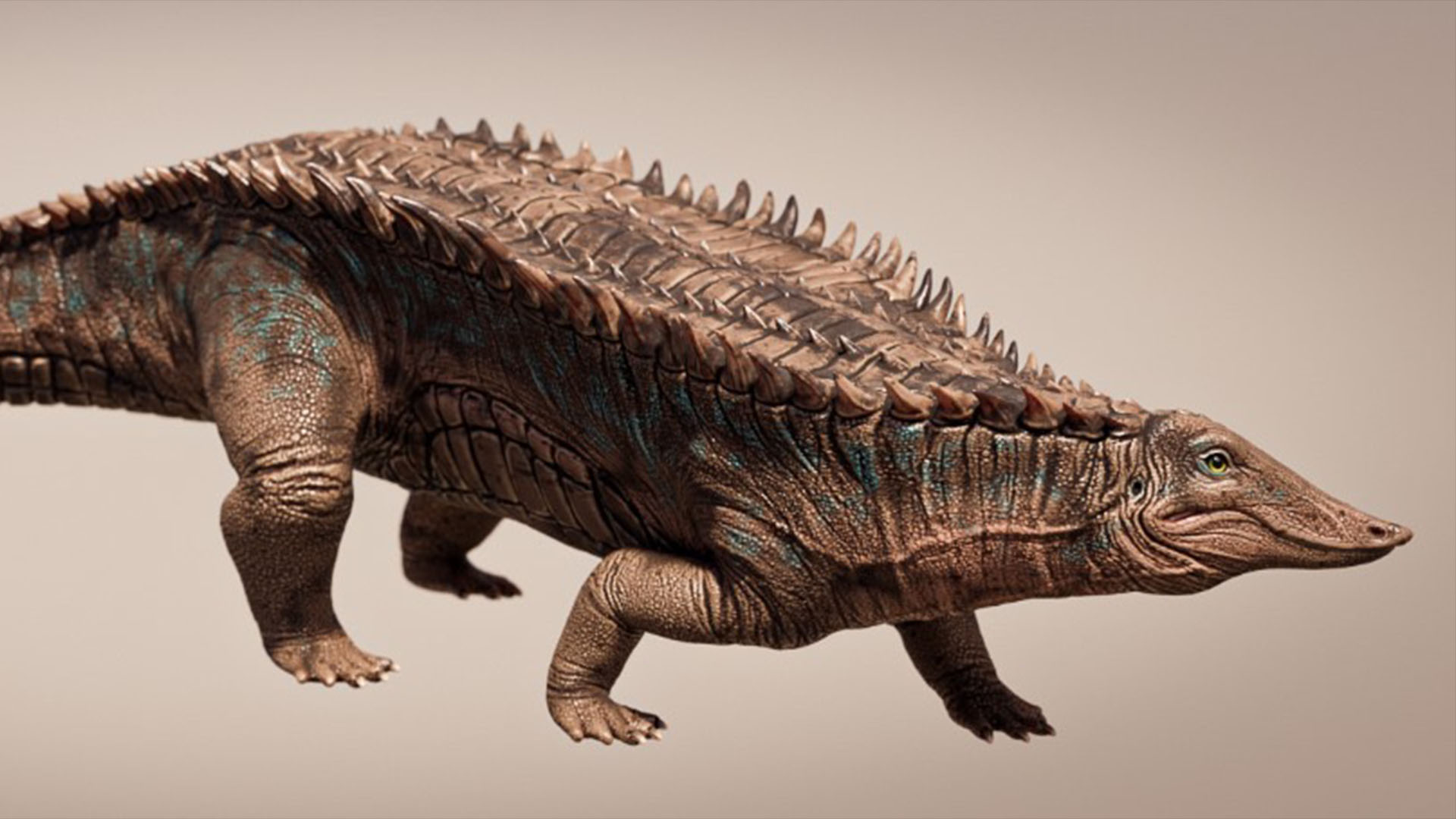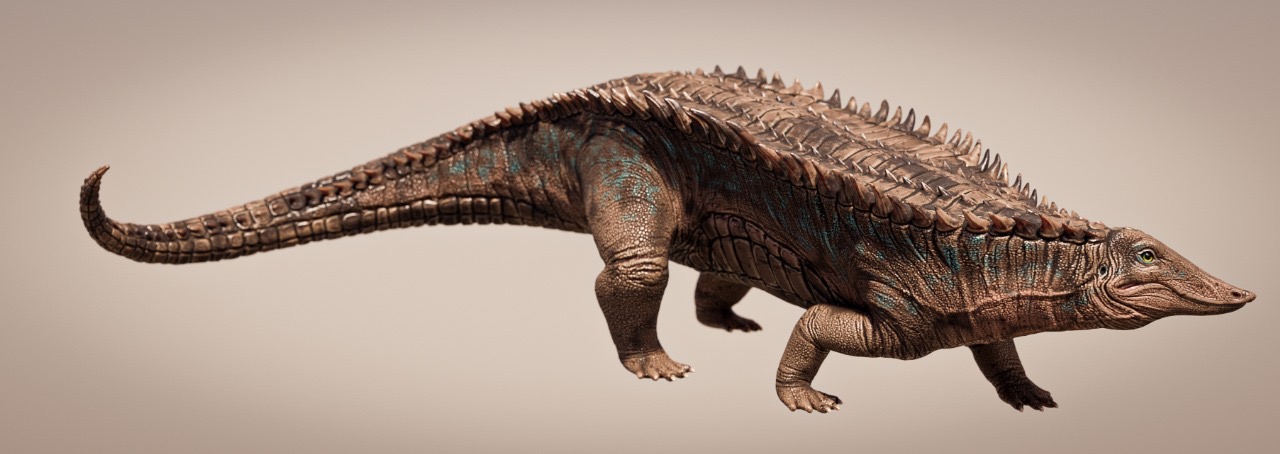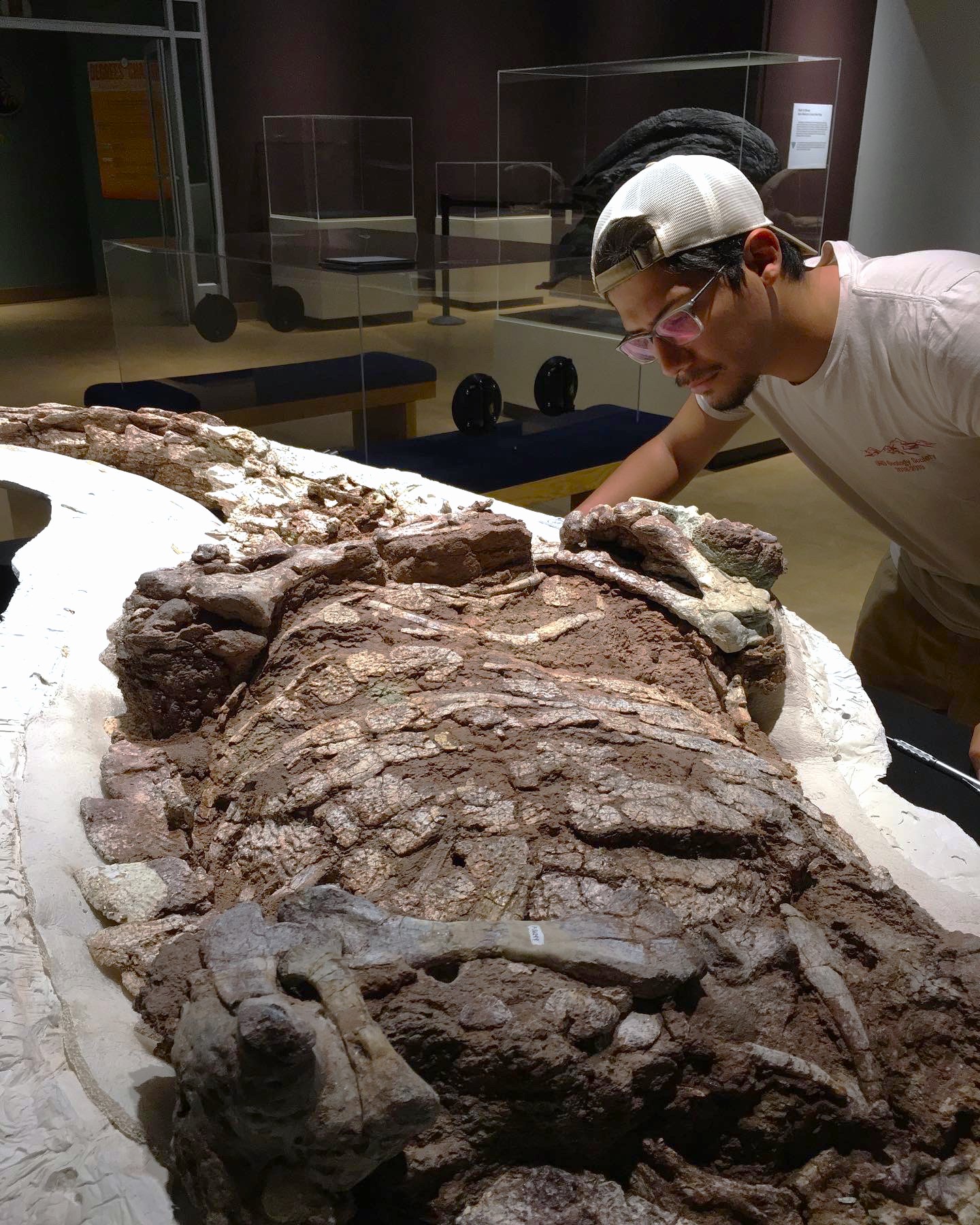
A huge armored crocodile cousin with plates embedded in its skin and curved spikes along its flanks roamed our planet 215 million years ago, scientists reveal.
The newfound species, discovered in the Cooper Canyon Formation in northwestern Texas, was an aetosaur. These stout-limbed beasts grew up to 16 feet (5 meters) long and were covered in bony plates called osteoderms for protection. They were "tanks of the Triassic," according to a statement released by The University of Texas at Austin.
Researchers unearthed a large portion of the creature's dorsal carapace, or back armor, the researchers said in a study, published Jan. 11 in the journal The Anatomical Record.
"We have elements from the back of the neck and shoulder region all the way to the tip of the tail," lead author William Reyes, a doctoral student at The University of Texas at Austin, said in the statement. "Usually, you find very limited material."

Aetosaurs ruled Earth during the late Triassic (237 million to 201 million years ago), living on every continent except Australia and Antarctica, according to the statement. Unlike modern crocodiles, which are strictly carnivores, aetosaurs were primarily omnivores.
Related: Stunning 240 million-year-old 'Chinese dragon' fossil unveiled by scientists
The late paleontologist Bill Mueller discovered the newly described fossil with local amateur collector Emmett Shedd in 1989. Preliminary research in the early 2000s found that the animal was likely a new species of aetosaur, but didn't decipher its evolutionary history.
Reyes and his colleagues named the animal Garzapelta muelleri. The genus name combines "Garza" from Garza County, where it was found, with "pelta," meaning "shield" in Latin. The species name honors Mueller.

The fossil stands out among known aetosaurs thanks to a variety of unique features, including a never-before-seen combination of bony plates. However, the team had trouble figuring out where it sat on the aetosaur family tree.
Most aetosaurs fit into one of two major groups: Aetosaurinae and Stagonolepidoidea. However, G muelleri had osteoderms on its back that resembled a species of Aetosaurinae called Rioarribasuchus chamaensis and lateral osteoderms — midsection spikes — that resembled a genus of species in Stagonolepidoidea called Desmatosuchus, according to the study.
The team cautiously concluded that G muelleri had more in common with Aetosaurinae overall and that its spikes likely evolved independently in a process called convergent evolution, where two unrelated or distantly related species evolve similar traits independently.
"Convergence of the osteoderms across distantly related aetosaurs has been noted before, but the carapace of Garzapelta muelleri is the best example of it and shows to what extent it can happen and the problems it causes in our phylogenetic analyses," Reyes said.







